Soil Organic Matter and its Importance for Water Management
This Deltafact highlights the role of soil organic matter in retaining water in the soil (sponge effect) and the options to influence its quantity and what this implies for water management.
|
Thema |
Zoetwatervoorziening, Delta facts, English versions |
|
Tags |
|
|
Downloads |
1. INTRODUCTION
2. RELATED TOPICS AND DELTAFACTS
3. STRATEGY
4. SCHEMATIC REPRESENTATION
5. INTERACTIONS
6. COSTS AND BENEFITS
7. PRECONDITIONS AND LOCATIONS
8. GOVERNANCE
9. FIELD EXPERIENCES
10. KNOWLEDGE GAPS
11. OVERVIEW CURRENT INITIATIVES AND RESEARCH
1. Introduction
This Deltafact depicts the background of functions of soil organic matter, options to influence its quantity in the soil on agricultural plots and what implications are for water management of an increase of soil organic matter content, while presenting a scientific basis for this.
Stakeholders from a number of sectors have expressed concern about the decline in organic matter quantity in Dutch arable land. Time series analyses (van den Akker, 2012 and Eurofin Agro, 2017), however, show neither downward nor upward trends on a national level. Locally there may be an ascending or descending soil organic matter quantity, for example when grassland is converted into arable land, or vice versa (Smit et al., 2007). However, the composition and quality of soil organic matter is changing structurally (Eurofins, 2017).
Sufficient soil organic matter is fundamentally important to availability of water and nutrients, trafficability, carbon sequestration, resilience against diseases and plagues and crop production. Maintaining and, where needed, increasing soil organic matter content serves to meet challenges that intensively used agricultural lands face, like dealing with extreme precipitation and drought, both occurring more frequently due to climate change.
That the organic matter content of agricultural fields should increase, has also landed as an issue in politics these days. The Dutch Minister Schouten (Agriculture and Nature) has recently stated in her vision about circular agriculture: “A soil containing much organic matter, is better equipped to absorb water and is more resistant against drought. Such a soil can also retain more nitrogen and minerals, offers a richer soil life and contributes to healthy crops.” (Schouten, 2018., p.22). The Soil Strategy, 2016 (in Dutch) of the Soil Technical Commission (TBC) of the Dutch Government indicates specific strategies for managing organic matter on agricultural fields. The draft Climate Accord (Klimaatberaad, 2018) refers to the significance of more organic matter in the soil.
2. Related topics and Deltafacts
Topics: Drought damage, Wet damage, Soil life, Soil structure, Soil compaction, Water shortage and freshwater supply, Water quality, Water storage
Deltafacts: Bodem als buffer, Onderwaterdrains, Bodemvocht gestuurd beregenen, Droogte stuurt functies,
3. Strategy
Soil organic matter receives attention nowadays as an option of improving the management of water at plot level and, at higher scales, of buffering effects of climate change on the water system. A healthy soil can provide various ecosystem services, linked to Retention, Storage and Supply (RIVM, 2014; Bodem als buffer). This notion may induce farmers, on behalf of a proper water management, to maintain the soil organic matter quantity or to even increase this, by applying adaptive cultivation systems and by supplying extra organic material. In this context, it is always important for the water manager, to question what these measures will mean on an area level to the water availability in dry periods, to the surface run-off in wet periods and to the water quality.
4. Schematic representation
Figure 1 shows organic matter content in Dutch top soils and helps identifying areas that are vulnerable with regard to their water availability. Figure 2 gives the many soil interactions related to organic matter.
Figure 1. Organic matter content at 15 cm depth in arable soils in the Netherlands (Van den Berg et al., 2017) and the profile of a podzol in which the dark upper layer indicates presence of organic matter.
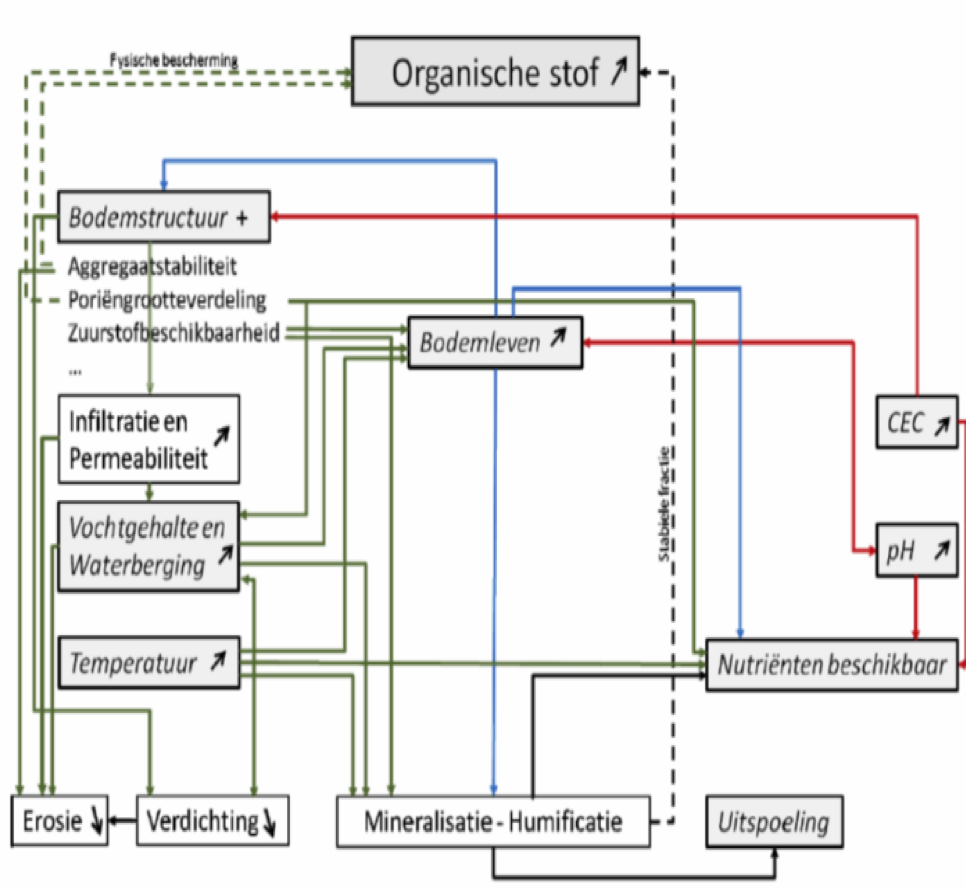
Figure 2. Schematic representation of soil interactions related to organic matter; blue lines: effect of soil life; green arrows: soil physical effects; red lines: soil chemical effects; dark lines: effects of soil processes. Dash lines: correlation with organic matter. Source: Reubens et al., 2010
5. Interactions
Organic matter, nutrient availability and soil structure
The influence of the quantity of soil organic matter on the nutrient balance is complex. An increase of the organic matter content leads to a stronger soil bonding of nutrients due to a higher cation-exchange capacity (CEC). When organic matter is decomposing, nutrients become available, so less fertiliser will suffice. However, in case nutrients are released in a period in which the crop does not require them, a higher organic matter content may lead to larger nutrient losses to ground- and surface water. Generally, clay soils have a good natural soil fertility. Sandy soils strongly depend on organic matter for nutrient supply. In these soils availability of nutrients is largely determined by interactions between soil life and soil organic matter.
There is a clear correlation between organic matter content and soil structure (Faber et al., 2011). The more organic matter present, the better soil structure will be. A good soil structure is essential for the carrying capacity and infiltration capacity, it limits the sensitivity for sealing and the chance of soil compaction, it makes the soil less sensitive for soil diseases and gives a higher crop yield.
Organic matter and water availability
The influence of the quantity of organic matter on water availability may be exerted directly or indirectly.
Direct effect on water retention
A direct effect is the influence of organic matter on the water retention. The water availability of the soil is calculated, by multiplying the quantity of available water between field capacity at pF = 2 and wilting point at pF=4.2, with the thickness of the root zone ∆z, like indicated in figure 3.
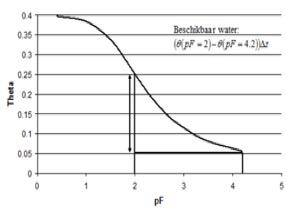
Figure 3. Water retention characteristic indicating the relationship between the pressure head (pF value) and the corresponding volumetric moisture content (Theta).
Derived from information about sandy soils in the Staring series (Wösten et al., 2001), the relation is calculated between the organic matter content and moisture content when saturated, at pF 2 (field capacity) and at pF 4.2 (wilting point). Figure 4 shows the result of calculations for a sandy soil and indicates that moisture content at all 3 pressure heads increases with increasing organic matter contents.
Figure 4. Curve of the volumetric moisture content at saturation, at pF 2 (field capacity) and at 4.2 (wilting point) wit organic matter content
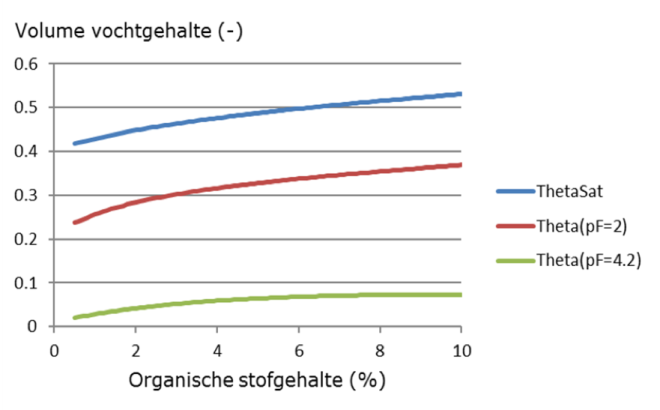
Figure 5 shows, on the basis of the above calculations, the curve of the soil
water availability in relation to the organic matter content of a sandy soil with two different loam contents. The water availability here is the quantity of water which the plant can take up from the soil between field capacity (pF 2) and wilting point (pF 4.2).
Taking figure 5 as the starting point, figure 6 gives the increase of the water availability with increasing organic matter contents.
Since the sandy soils from the Staringreeks (Wösten et al., 2001) contain minimally 1% organic matter, water availability itself (figure 5) and its increase (figure 6) are estimations. In case organic matter contents are below 1%, these are shown, for this reason, as dotted lines.
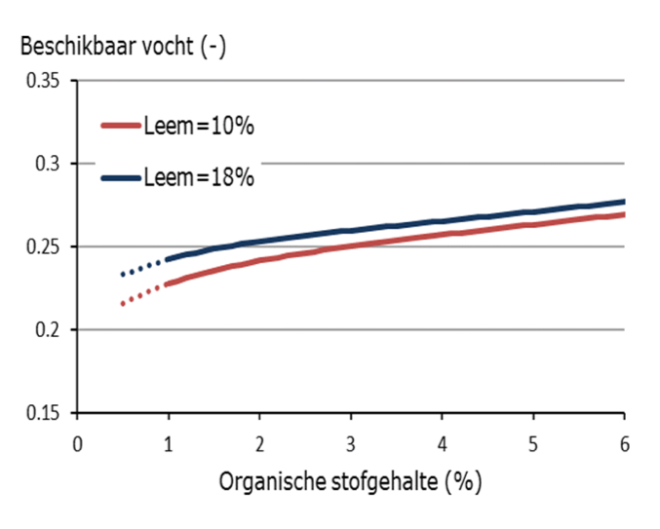
Figure 5. Curve of the water availability and the organic matter content.
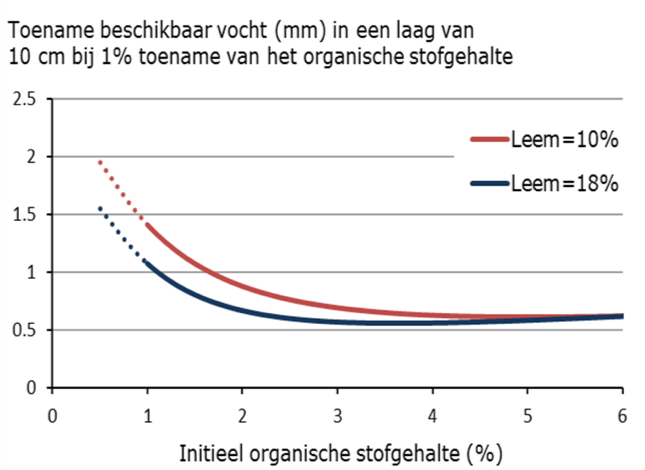
Figure 6. Increase of water availability (mm) in a layer of 10 cm with an increase of organic matter of 1%.
Indirect effect on water retention
An indirect effect is that organic matter lowers the bulk density of soils and therefore the resistance against penetration by plant roots. Plants on soils with higher organic matter contents may not only take up more water from a certain root zone, but this root zone can also become thicker, making again more water available.
The most important conclusions in relation to organic matter content and water availability are:
- An increase of organic matter content leads to a direct and indirect increase in water availability. The indirect effect has not been quantified.
- Poor sandy soils with 0,5 up to 1 % organic matter will render, with an increase of 1 % organic matter, an increase of 3 – 4 mm available water (figure 6) in a root zone with a thickness of 20 cm. This roughly equals one day extra transpiration.
- In the trajectory from 1 to 3 % organic matter, an increase of 1 % organic matter leads to an increase of 2 -3 mm available water (figure 6) in a root zone of 20 cm this equals less than one day extra transpiration.
- In the trajectory from > 3 % organic matter, an increase of 1 % organic matter leads to an increase of 1 mm available water in a root zone of 20 cm (sand).
- In a dry summer, in which the precipitation deficit continuously increases, extra water availability will have little effect. However, in a moderately dry summer with a regular shower, extra water availability of 3-4 mm can be used multiple times and it could lead to postponing a sprinkler irrigation application of 20 – 25 mm (Bodemvocht gestuurd beregenen) or to not apply this at all.
- Increasing organic matter content will, in the Netherlands, have the greatest impact on water availability in the green- and yellow coloured sandy soils in the mid- and eastern part of North Brabant and in the Achterhoek and Twente (Figure 1). The nature areas (for example the Veluwe) and coastal and riverine clay soils are not relevant in this. The agricultural fields on clay already have a large water retention capacity, regardless its organic matter content (Van den Berg et al., 2017).
- The more organic matter is present, the better the soil structure will be, thereby giving the soil a higher infiltration capacity with less ground level run-off (indirect positive effect on the water retention and possibly reduction of peak discharges (Schipper et al., 2015). Also the composition and the ratio between dynamic and stable organic matter can have an influence on the water retention (Eurofins, 2017). No field studies are known, that quantify these indirect effects for Dutch soils, yet there are indications from field research elsewhere (Williams et al., 2017), that point to a positive effect.
- A good soil structure makes it possible that plants root well, which means increasing water availability for the crops. Based on an average of 25 % available water (figure 5), a root zone of 20 cm renders 50 mm water. With a root zone of 30 cm this is 75 mm. This means an increase of 50%.
Ways to increase organic matter content
First of all, it is important to quantify what an increase of 1 - 5 % organic matter means in terms of the yearly supply of organic matter. It is important hereby, to make a distinction between two forms of organic matter: old organic matter (“humus”) that degrades at a rate of 2% under Dutch circumstances, and fresh organic matter of which 40 % is converted into humus within one year (Figure 7).
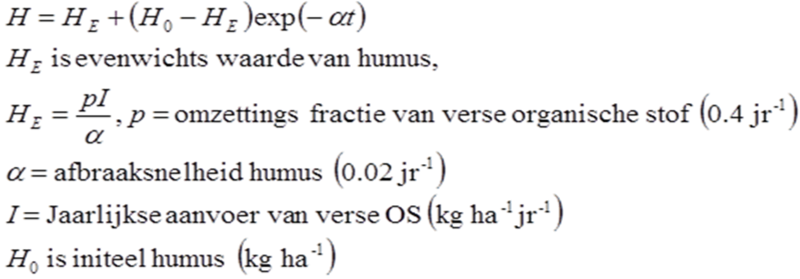
Figure 7. Calculation method for the volume of supplying humus (in kg per hectare)
Fresh organic matter is superficially supplied and subsequently ploughed through. Conversions will then take place in the 20-25 cm thick root zone. Such a root zone corresponds with ca 3 106 kg soil and 1% of this is 3 104 kg ha-1. The yearly supply would then amount to 0.02*3 104/0.4 = 1,500 kg organic matter per hectare, which is quite a significant volume. This is why it is more practical to follow a long-term strategy, instead of aiming to reach this 1% increase in 1 year. The strategy would then be to increase the organic matter content by 1% gradually, over several years.
The soil organic matter content, in general, can be raised in the following 3 ways (SmartSoil project, 2015):
- Advancement of input in the soil of crop- and root residues
- Increase of the quantity of soil organic matter by supplying manure and compost (both from external sources as from the farm itself)
- Reduction of de-composting losses by limiting disturbance of the soil
The following cultivation measures have a positive effect on conserving and increasing of the soil organic matter content:
1. Crop rotation
Cultivation of crops with a long growing season combined with the cultivation of leguminous plants that improve the quality of organic matter.
2. Crop residues
Crop residues are those materials that are left on the field after the crop has been harvested. This includes stems, stubbles, leaves, roots and chaff. Insert these crop residues maximally into the soil.
3. Supply of manure and compost
Supply of manure and compost effectively enhances the organic matter content, because it decomposes less quickly than fresh crop- and root residues. Supplying manure and compost will also often decrease the necessity to apply fertiliser.
4. Soil covering and catchment crops
Prevention of fallowing in winter, by cultivating crops year-round, enhances the insertion of organic matter and decreases soil erosion and leaching of nutrients.
5. Conservation agriculture
Conservation agriculture consists of minimizing soil tillage and having permanent soil coverage and diversity in crops. Minimal- and eventually no soil tillage, by a transition from frequent ploughing to forms of non-inversion tillage, diminishes the decomposition of organic matter.
The five measures are summarised in Table 1. Both the prevention of fallowing and the reduction of tillage take time before it results in an obvious increase of organic matter content.
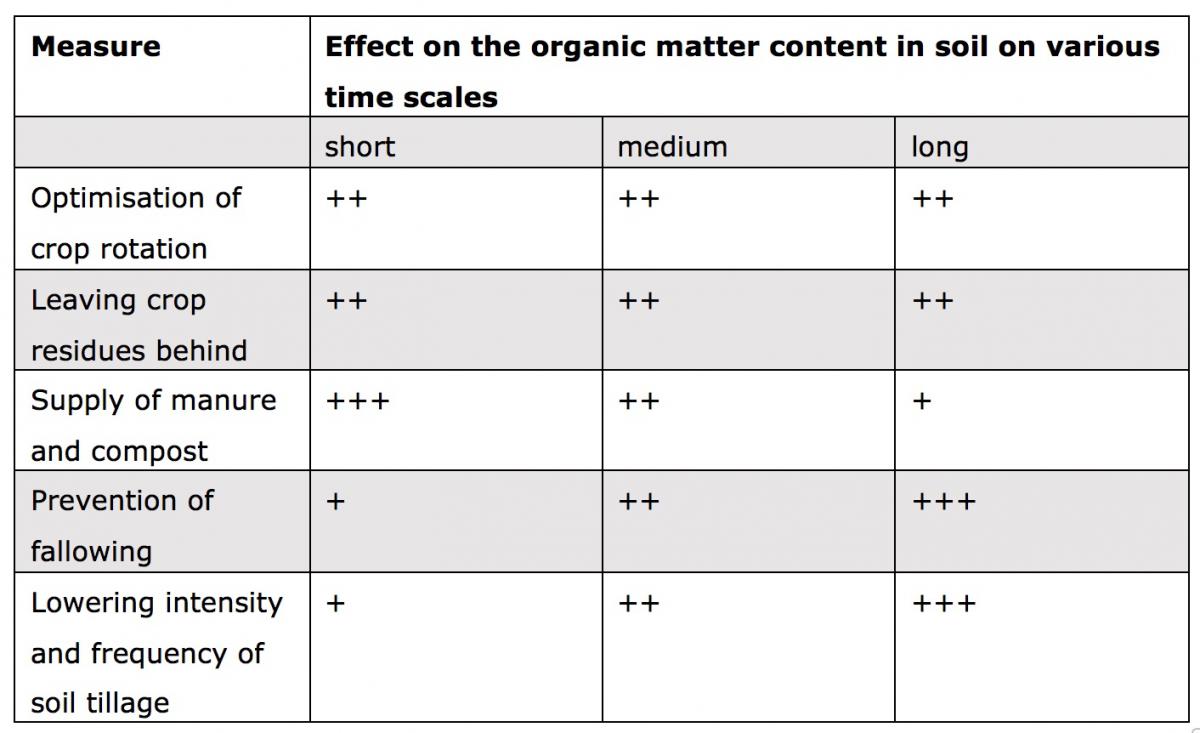
Table 1. Promising measures for the increase of organic matter content and their most important characteristics in the short (0 -5 years), medium (5 – 10 years) and long (> 10 years) term.
6. Costs and benefits
The additional costs of spreading garden- and food waste (VGF) or compost on the field instead of using animal slurry (which also contains organic matter) have been estimated by the Louis Bolk Institute to be between €150 (VGF) and €500 (compost) per ha per year (De Wit, 2013). The costs of green-manure crops amount to €130-€276 per ha per year including costs of sowing (Kennisakker, 2017). These cost key indicators may differ per type of soil, cultivation type (crop) and ways of utilisation.
Societal and economic benefits from increasing quantities of organic matter will be obtained by lowering irrigation costs, additional yield from the crop, carbon sequestration and effects on the water quality. The ‘state of the art’ on the agro-hydrological insights about this, has been described by Groenendijk et al. (2017). No economic interpretation is available of this research, thereby preventing drawing of proper conclusions about which conditions would justify, on a farming business scale, costs of application of green-manure plants, VGF or compost in order to raise organic matter contents.
7. Preconditions and promising locations
Organic matter is important for moisture supply, carrying capacity, water infiltration, nutrients storage, soil flora and fauna. This fact sheet specifically describes the role of organic matter on water management while in the fact sheet “Bodem als Buffer ” the other positive effects of this measure are treated.
The direct effect of an increase of the organic matter content on water availability is especially relevant in a group of sandy soils with an organic matter percentage lower than 3%. This means for the Netherlands in practice, that especially the green and yellow coloured sandy soils in figure 1, i.e. Mid- and East-Brabant, the Achterhoek and Twente, are promising locations.
The increase of soil organic matter content needs attention also in the long run, while it constitutes an investment with risks to be included in the decision-making of a regional water manager, who is busy realising a climate-proof water system.
8. Governance
The societal benefits of measures to increase the organic matter content on plot level, are difficult to express in terms of money or as a net revenue (costs-benefits). Yet it is clear that additional costs are involved, when the farmer wants to introduce such measures in his enterprise. An authority (water board, province) may consider to establish financial arrangements when additional costs do not just serve a private interest (more produce). Subsidies or interest-free loans can (partly) compensate for measures that lead to carbon sequestration or flooding prevention. Examples can be found in the Delta Freshwater programme, the Deltaplan Agrarian Water Management and POP3, as is summarised in the Deltaprogramma Zoetwater 2017.
Water Boards in the Netherlands are more and more interested in and are contributing to measures, aimed at raising soil organic matter contents, like the Lumbricus programme and the Landbouwportaal Noord-Holland (Waterschap Hollands Noorderkwartier, 2019). Much debate among board members still lingers, however, on who should bear the costs of soil-related measures on a plot level: the water manager or the agrarian entrepreneur.
9. Field Experiences
There is much direct or indirect attention, from research and other initiatives, for the buffering role of the soil, that retains water. An (incomplete) overview is given in paragraph 12. These initiatives are contributing to the realisation of the current National Water Plan 2016-2021.
10. Knowledge Gaps
- Which cumulative effects play a role causing that measures taken, do not immediately result in a desired new equilibrium in the soil?
- How can the effect be quantified of an increase of organic matter content on soil functions like nutrients availability, trafficability, carbon sequestration, resilience against diseases and pests and crop production?
- What is the effect of increasing organic matter content on water availability at a plot-, farm- and river basin-level (scaling-up)?
- What are the economic and societal costs and benefits of measures aimed at increasing organic matter content?
- What should be the role division between water managers and farmers in stimulating process to actually embed measures for increasing organic matter?
- What is the influence of organic matter on soil biology? Effects to consider are permeability, stability, carrying capacity and water availability.
11. Overview current initiatives and research
| Research project | Research location | Links/documents | |
|---|---|---|---|
| Soil Health Index | Wageningen Environmental Research | ||
| SoilCare for profitable and sustainable crop production in Europe | Wageningen Environmental Research | ||
| Recare: Preventing and remediating degradation of soil in Europe through land care | Wageningen Environmental Research | ||
| Gezonde toplaag Gelderland (Louis Bolk Instituut) | Gelderland | http://www.louisbolk.org/landbouwbodembeheer/gezonde-toplaag-gelderland | |
| Goede grond voor een duurzaam watersysteem (2011-2015) | Nederland | https://www.stowa.nl/publicaties/goede-grond-voor-een-duurzaam-watersysteem-verdere-verkenningen-de-relatie-tussen | |
| Gouden gronden (continuous) | Noord Nederland | https://www.noorderzijlvest.nl/ons-werk/projecten/projecten-(lopend)/programma-gouden/ | |
| Bodem kwaliteit op zandgrond (Vredepeel) (continuous) |
PPO-locatie Vredepeel | https://www.wur.nl/nl/Onderzoek-Resultaten/Onderzoeksprojecten-LNV/Expertisegebieden/kennisonline/Bodemkwaliteit-op-zand-1.htm | |
| Duurzaam bodemgebruik veenweide (Veenweide Innovatie Centrum; Zegveld) | Veenweidegebieden (Utrecht) | https://www.veenweiden.nl/ | |
| Deltaplan hoge zandgronden | Brabant/Waterschap Aa en Maas | Deltaplan hoge zandgronden | |
| Kijk eens wat vaker onder de graszode | waterschap Vallei & Veluwe | Kijk eens wat vaker onder de graszode | |
| Bufferboeren – Samenwerken aan een betere waterbeschikbaarheid van de bodem | Bernheze (Noord- Brabant) | Website bufferboeren | |
| Klimaatadaptief Waterbeheer: Wat biedt de bodem? | STOWA en SKB | ||
| Gezond Zand | ROM3D | ||
| Vruchtbare kringloop | WS Rijn en IJssel | Website vruchtbare kringloop | |
| Lumbricus | WA Aa en Maas / WS vechtstromen | Website Lumbricus | |
| Salland waterproof | WS Drents Overijsselse Delta |
|
|
| Nationaal kennis- en Innovatieprogramma Water en Klimaat | Nederland | Website NKWK | |
| Landbouw op peil | Nederland | Website Landbouw op peil | |
| kenniscentrum Akkerbouw | Nederland | ||
| Mijn bodemconditie | Nederland |

 English resume
English resume